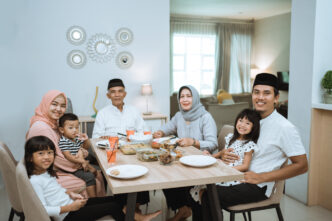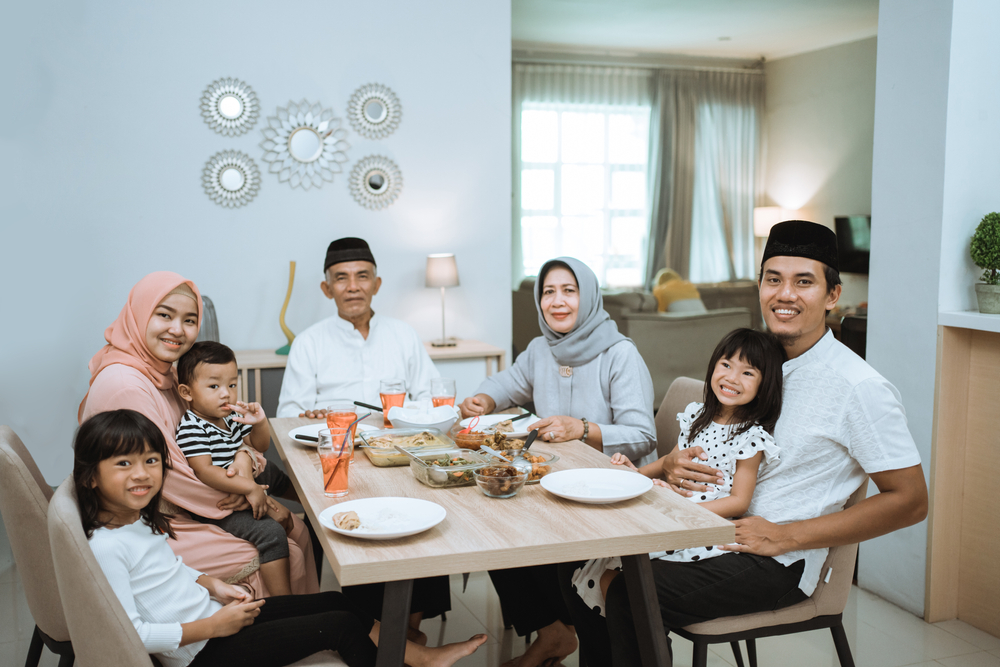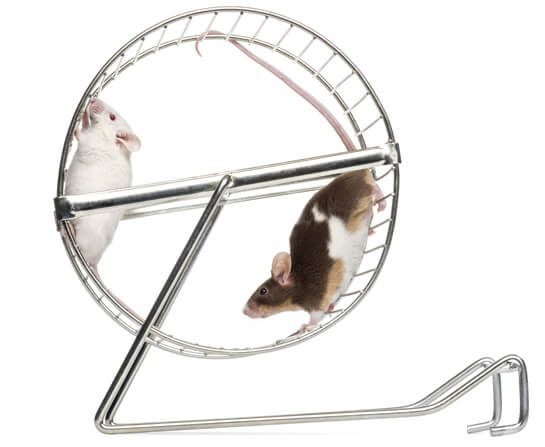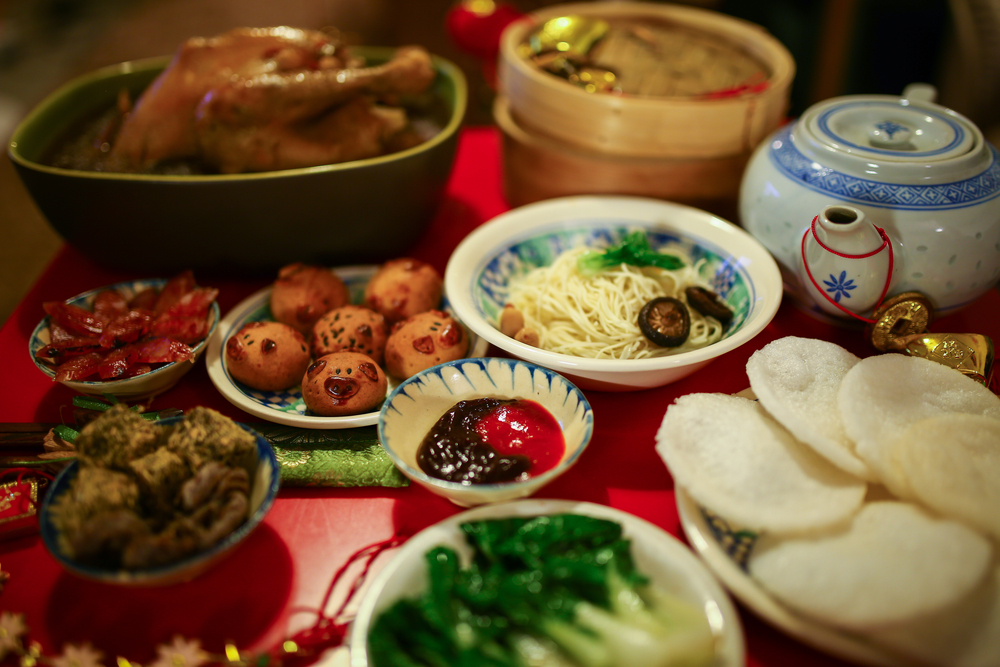As Malaysians, shared meals are a cornerstone of social and family life, which can feel like a reminder of their restrictions for people with end stage renal failure (ESRF). The need for a separate plate due to strict dietary rules can isolate them, turning joyful gatherings into moments of exclusion. Yet, with the right approach, shared meals can become a source of support, togetherness, and motivation for adherence for people with ESRF.
WORDS THARINE JYO LIYN AND NUR ADILA SAMINGAN
 FEATURED EXPERT FEATURED EXPERTTHARINE JYO LIYN Final Year Student of Bachelor of Science (Hons) Dietetics with Nutrition School of Health Sciences IMU University |
 FEATURED EXPERT FEATURED EXPERTNUR ADILA SAMINGAN Clinical Instructor Division of Nutrition, Dietetics and Food Science School of Health Sciences IMU University |
“Every weekend, I used to join my friends for lunch at coffee shops, followed by lively family dinners. Those moments of connection over food felt effortless. But since being diagnosed with ESRF, everything changed. Fatigue became my excuse to stay home, but the real reason was deeper: I couldn’t enjoy the same foods as my loved ones, and I didn’t want them to adjust their meals for me. Eating alone at home was healthier for my condition, but it was lonely.”
The above is an unfortunately common lament among people living with end stage renal failure (ESRF).
As Malaysians, shared meals are a cornerstone of social and family life, which can feel like a reminder of their restrictions for people with ESRF. The need for a separate plate due to strict dietary rules can isolate them, turning joyful gatherings into moments of exclusion. Yet, with the right approach, shared meals can become a source of support, togetherness, and motivation for adherence for people with ESRF.
QUICK FACTS ABOUT ESRF
|
ISOLATION AT THE DINNER TABLE
ESRF requires a strict diet to manage sodium, potassium, phosphate, and fluid intake.
- These restrictions often mean preparing separate meals, which can make patients feel like outsiders in their own families.
- The emotional toll is significant; patients may skip social gatherings to avoid explaining their diet or feeling like a burden when selecting where to eat.
- Research shows that isolation can lead to loneliness, which is linked to anorexia (loss of appetite) in people with ESRF, worsening their nutritional health.
- If they are also living with other health conditions like diabetes and cardiovascular diseases, conflicting dietary advice can further complicate adherence, leaving patients frustrated and disconnected.
THE IMPORTANCE OF EATING TOGETHER AS A FAMILY
Shared meals are more than just eating together; they’re about connection, support, and offer a sense of belonging.
Benefits of people with ESRF being included in family or social dining:
- Boost emotional well-being.
- Encourage sticking to recommended dietary guidelines.
- Strengthens motivation and adherence to recommended behavioural adjustments by fostering a sense of togetherness.
- When families actively participate, patients feel less alone, making it easier to follow their renal diet.
These Benefits Have Been Proven by Research
According to a study conducted in Queensland, Australia, eating together can be highly beneficial for individuals with end-stage renal failure (ESRF), particularly when family members are involved in managing the diet.
- It helps reduce feelings of loneliness and makes it easier to stick to the diet.
- For example, cooking meals together can create a better understanding and practical support.
A feeling of isolation can hurt both mental and physical health, and loneliness is known to make chronic illnesses harder to manage.
- While following a kidney-friendly diet may sometimes disrupt family routines, having support from loved ones over time helps those living with ESRF adhere to the diet more effectively while reducing their emotional stress.
Thus, research has highlighted how sharing meals can turn a difficult diet into something more manageable and even enjoyable.
HOW TO MAKE SHARED MEALS WORK FOR THE WHOLE FAMILY
Turning the negative into a positive starts with inclusion. Here are practical ways to make shared meals work for people with ESRF and their families.
- Educate the family. Families should learn about the basics of renal diets to support their loved ones without making them feel like a burden.
- Adopt healthy eating as a family. Instead of preparing a separate meal for the patient, everyone can reduce sodium or choose low-potassium ingredients. For example, swap high-sodium sauces for herbs and spices to create flavorful dishes that suit all.
- Focus on what is allowed. Highlight foods that can be safely eaten, like fresh herbs or lean meats, to shift the focus from restrictions to possibilities.
- Cook versatile dishes. Prepare meals like vegetable stir-fries with low-potassium options (such as cabbage, broccoli or bitter gourd) or grilled proteins with controlled phosphate content. These can be enjoyed by everyone, ensuring the patient doesn’t feel singled out.
- Involve a dietitian. Work with a dietitian to design family-friendly recipes that meet renal guidelines while appealing to all tastes. This can make meal planning less daunting.
- Seek peer support. Join peer groups or online communities for ESRF patients to get tips and emotional encouragement, thereby reinforcing the value of shared meals.
Sharing healthy meals with family and friends not only promotes togetherness but also supports everyone’s well-being, helping prevent chronic diseases and easing the guilt ESRF patients may feel about their dietary restrictions.
Tips on Fluid Intake for People with ESRF
|
A SHARED PLATE, A SHARED JOURNEY
Shared meals don’t have to be a source of stress for people with ESRF; they can be a pathway to connection and better health.
People living with ESRF shouldn’t hesitate to involve their loved ones or seek peer advice to make meals inclusive.
Families of people with ESRF should take the time to understand renal dietary guidelines and embrace healthier cooking and eating together.
By sharing the table, families are also sharing support; a shared plate is more than food — it’s a shared journey toward wellness.
| Do you know that the IMU Student Dietetics and Wellness Clinic in IMU University offers free individualized meal planning services as well as a few other nutrition-related services? Check out our article on this clinic and how you can avail yourself to their free services. |
| This article is part of our series on foods and how consuming these foods can affect various aspects of our health. |
References:
- Wolfe W. A. (2022). Loneliness: An overlooked contributing factor in anorexia of older patients with end-stage renal disease and focal point for interventions to enhance nutritional status – An overview of evidence and areas of suggested research. Journal of Renal Nutrition, 32(5), 498–502. https://doi.org/10.1053/j.jrn.2021.10.002
- Oka, M., Yoneda, K., Moriyama, M., Takahashi, S., Bull, C., & Chaboyer, W. (2019). The dietary patterns of Japanese hemodialysis patients: A focused ethnography. Global Qualitative Nursing Research, 6, 2333393619878150. https://doi.org/10.1177/2333393619878150
- Kelly, J. T., Campbell, K. L., Hoffmann, T., & Reidlinger, D. P. (2018). Patient experiences of dietary management in chronic kidney disease: A focus group study. Journal of Renal Nutrition, 28(6), 393–402. https://doi.org/10.1053/j.jrn.2017.07.008
- Morris, A., Love, H., van Aar, Z., Liles, C., & Roskell, C. (2018). Integrating renal nutrition guidelines into daily family life: a qualitative exploration. Journal of Human Nutrition and Dietetics, 31(1), 3–11. https://doi.org/10.1111/jhn.12483










